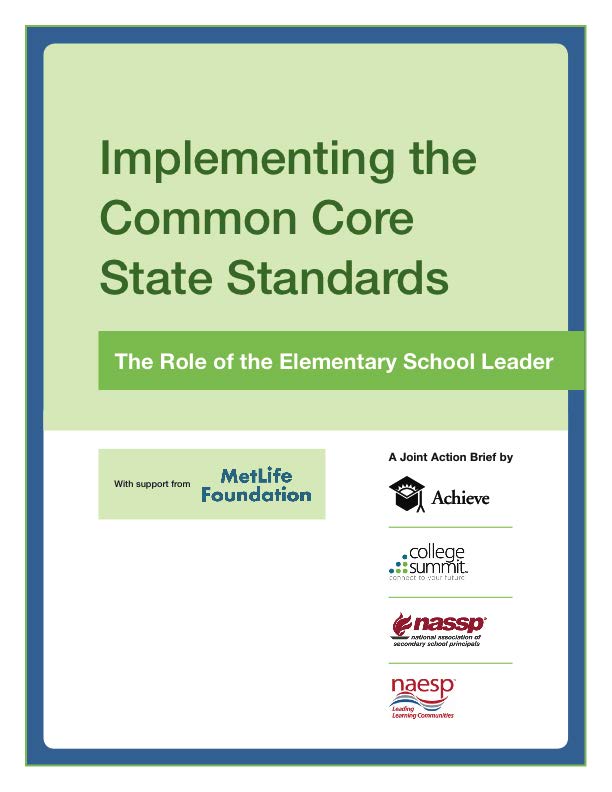Twelve Key Common Core Shifts: Action Steps for Principals
Communicator January 2013, Volume 36, Issue 5 To lead implementation of the Common Core State Standards, school leaders must focus on building the capacity of their teachers.
Communicator
January 2013, Volume 36, Issue 5
 To lead implementation of the Common Core State Standards, school leaders must focus on building the capacity of their teachers.
To lead implementation of the Common Core State Standards, school leaders must focus on building the capacity of their teachers.
For school leaders and counselors, implementing the CCSS is not about thinking out of the box—it is about transforming the box itself. Principals will need to collaborate with their teacher leaders, listen to the needs of their staff, and consider how to make sure that their schools are teacher- and student-friendly environments in which the norm is trying new things.
A new action brief from NAESP, NASSP, College Summit and Achieve, explores the role of principals in this process. “Implementing the Common Core State Standards: The Role of the Elementary School Leader” offers a primer on the standards and twelve key schoolwide changes that must occur with implementation.
One of the major shifts, for instance, is that instructional time must be retooled. According to the brief:
While they have input into the curriculum, school leaders directly control three variables in teaching and learning — time, setting and methods. Of the three, increasing quality instructional time may offer the most immediate gains in student achievement.
Simply put, all students do not learn at the same rate. The most obvious yet often overlooked way to differentiate instruction schoolwide is to allow students to learn at their own pace.
Teachers will likely need more instructional time in order to teach more rigorous, higher-level content in more depth and to integrate literacy skills into their lessons. Even as policy makers are considering ways to make extended school days, an extended school year, after-school tutoring and multi-tiered interventions financially possible, school leaders must help teachers make maximum use of the time they already have. Teaching “bell to bell” under the CCSS is now a minimum, first step. Long term, school leaders will need to work to improve teaching methods by greatly enhance teacher capacity to actively engage students and employ high-level questioning and thinking strategies.
Action Steps: Instructional Time
- Discuss the relationship of learning time to student achievement with the school leadership team, particularly with respect to Tier 1 interventions.
- Communicate an expectation that all teachers will teach “bell to bell” and that meeting that expectation will take time to realize.
- Ask teacher leaders to identify all the ways that teachers are extending learning time for students, including such Tier 2 interventions as tutoring and additional review sessions.
- Identify the number of opportunities students have to participate in extended learning opportunities, including such Tier 3 interventions as reading classes and extended time or “double-block” mathematics classes.
- Identify extended learning opportunities for students to participate in accelerated or enriched learning opportunities that go beyond standard course offerings.
The other important changes include shifts in: school culture, literacy instruction, text complexity, close reading, math instruction, student engagement, create-and-learn versus sit-and-get, professional learning, assessment, and technology integration. Read more about each one, including action steps and talking points, in the action brief.
The CCSS represent a real shift in instructional intent from high school graduation to college and career readiness. This shift in intent means profound changes in the way students learn and are assessed, in the way teachers teach, and in the way instructional leaders lead. The reality is that the responsibility for ensuring high-quality, transformative professional development and fidelity of implementation will fall squarely on the shoulders of the school leaders.
—
Copyright © 2013. National Association of Elementary School Principals. No part of the articles in NAESP magazines, newsletters, or website may be reproduced in any medium without the permission of the National Association of Elementary School Principals. For more information, view NAESP’s reprint policy.

